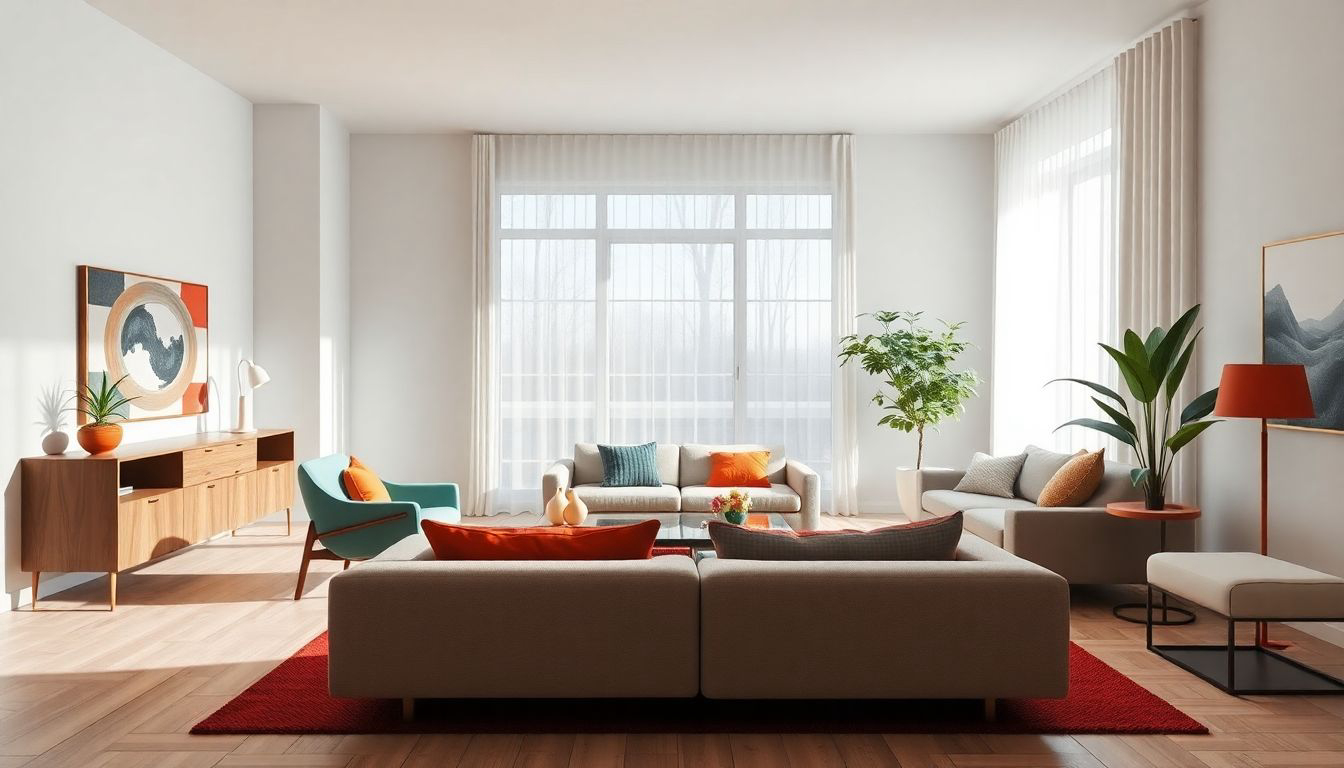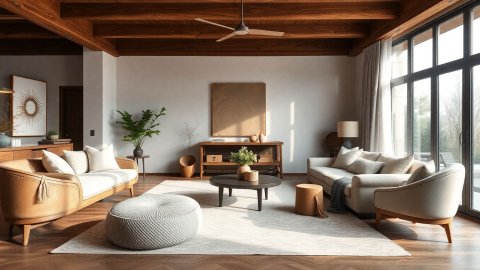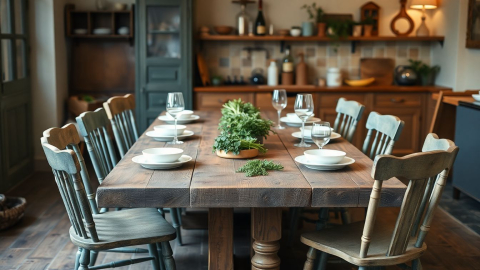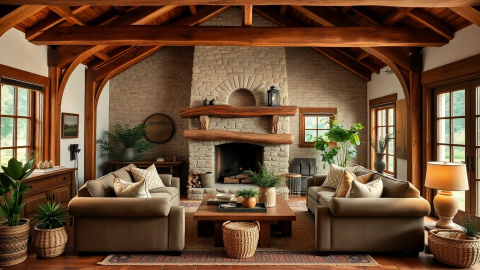Bauhaus Interior Design: A Century of Influence and Innovation

In the realm of modern design, few movements have left as indelible a mark as Bauhaus. Born in the crucible of post-World War I Germany, the Bauhaus school revolutionized the way we think about form, function, and the very essence of design itself. As we reflect on its centenary, it's clear that Bauhaus interior design continues to shape our living spaces, workplaces, and even the devices we hold in our hands. This enduring legacy is a testament to the school's pioneering spirit and its radical approach to merging art with industry.
The Birth of a Design Revolution
The Bauhaus school, founded by Walter Gropius in 1919, emerged as a beacon of modernism in a world eager for change. Its mission was ambitious yet straightforward: to unite art and craftsmanship in service of creating functional, accessible design for all. This ethos represented a stark departure from the ornate styles that had dominated European design for centuries.
As Ellen Lupton, curator at Cooper Hewitt, explains:
"The Bauhaus was always a myth, even in its own time, that built itself up through publishing and lectures and excellent photography, getting the word out by manufacturing products, building model homes, all that kind of stuff that always made it press-worthy."
This myth-making was integral to the school's success and its lasting impact on design culture. The Bauhaus wasn't just creating objects; it was crafting a new way of thinking about the relationship between form and function.
Key Characteristics of Bauhaus Interior Design
Bauhaus interior design is characterized by several distinctive elements that have become synonymous with modern aesthetics:
- Geometric Shapes: Clean lines and simple geometric forms are hallmarks of the Bauhaus style.
- Primary Colors: A bold use of primary colors, often juxtaposed with neutral tones.
- Industrial Materials: The incorporation of materials like tubular steel, glass, and concrete.
- Functionality First: Every element serves a purpose, with form following function.
- Minimalism: A rejection of unnecessary ornamentation in favor of sleek, uncluttered spaces.
These principles were not just aesthetic choices but reflections of the Bauhaus philosophy that good design should be both beautiful and practical.
Iconic Designs that Defined an Era
The Bauhaus movement produced numerous designs that have become icons of modernism. Perhaps none is more recognizable than Marcel Breuer's Wassily Chair, created in 1925. Inspired by the frame of a bicycle, Breuer's design epitomizes the Bauhaus ethos of combining industrial materials with elegant form.
Another seminal piece is Ludwig Mies van der Rohe's Barcelona Chair, which debuted in 1929. Its sleek profile and luxurious materials elevated the concept of functional design to new heights of sophistication.
These pieces, along with others like Josef Albers' nesting tables and Marianne Brandt's teapots, demonstrate the versatility and enduring appeal of Bauhaus design principles.
From Dessau to the World: The Spread of Bauhaus
The Bauhaus school's physical existence was short-lived, closing under pressure from the Nazi regime in 1933. However, this closure paradoxically led to the global dissemination of Bauhaus ideas. As its teachers and students scattered across the world, they carried with them the seeds of modernism that would flourish in diverse environments.
In Britain, for example, Bauhaus émigrés found ways to integrate their ideas into various aspects of design and culture. As noted by curator Sam Thorne:
"The Bauhaus can be detected everywhere from Factory Records to Liberty fabrics, from Kraftwerk to James Bond."
This unexpected infiltration of Bauhaus principles into popular culture demonstrates the movement's remarkable adaptability and enduring relevance.
The Bauhaus Legacy in Contemporary Design
Today, the influence of Bauhaus can be seen in everything from the sleek lines of modern furniture to the user interfaces of our smartphones. Apple's Jonathan Ive, for instance, has acknowledged the debt his designs owe to Dieter Rams, who in turn was heavily influenced by Bauhaus principles.
The Bauhaus emphasis on combining artistry with industrial production finds its echo in the current maker movement and the renewed interest in craftsmanship. Similarly, the school's interdisciplinary approach resonates with contemporary design education, which often blurs the lines between different creative disciplines.
Challenges and Criticisms
Despite its undeniable influence, the Bauhaus movement has not been without its critics. Some argue that its focus on functionalism led to a certain coldness or lack of human warmth in design. Others point out that the movement's utopian ideals were not always realized in practice, particularly when it came to issues of accessibility and affordability.
Moreover, as design historian Leah Dickerman notes, the Bauhaus vision of a universal, deracinated design language has been questioned in an era that values cultural specificity and diversity:
"The Bauhaus subject is a robotic mute," passing "easily across political borders."
This critique raises important questions about the role of cultural context in design and the potential limitations of a one-size-fits-all approach.
Bauhaus in the 21st Century: Adaptation and Evolution
As we move further into the 21st century, the principles of Bauhaus continue to evolve and adapt to new challenges. Sustainability and eco-friendly design practices, for instance, can be seen as natural extensions of the Bauhaus emphasis on efficiency and material honesty.
The digital revolution has also opened up new avenues for exploring Bauhaus ideas. Virtual and augmented reality technologies offer exciting possibilities for reimagining space and form in ways that the original Bauhaus designers could only have dreamed of.
The Future of Bauhaus-Inspired Design
Looking ahead, it's clear that the Bauhaus legacy will continue to shape design thinking for years to come. As we grapple with global challenges like climate change and urbanization, the Bauhaus principles of functionality, simplicity, and interdisciplinary collaboration remain as relevant as ever.
However, future designers will likely need to balance these principles with a greater emphasis on cultural diversity, environmental sustainability, and human-centered design. The challenge will be to maintain the essence of Bauhaus while adapting it to the needs and values of a rapidly changing world.
Conclusion: The Enduring Spirit of Innovation
A century after its founding, the Bauhaus school continues to inspire and provoke. Its legacy is not just in the objects it produced or the aesthetics it championed, but in its spirit of experimentation and its belief in the power of design to shape society.
As we look to the future, we can draw inspiration from the Bauhaus commitment to innovation and its holistic approach to design. By embracing these principles while addressing contemporary challenges, we can ensure that the spirit of Bauhaus continues to evolve and enrich our world for generations to come.
References and Further Reading
- Davies, R. (2023). Bauhaus Interior Design: Everything You Need to Know About the Geometry-Minded Style. Architectural Digest.
- Heathcote, E. (2019). The enduring legacy of Bauhaus, from phones to skyscrapers. Financial Times.
- Moore, R. (2019). Bauhaus at 100: its legacy in five key designs. The Guardian.
- Schjeldahl, P. (2009). Bauhaus Rules. The New Yorker.
- Thorne, S. (2019). From bob cuts to Bond films, the Bauhaus legacy lives on. The Guardian.
- Wainwright, O. (2014). A night with the Bauhaus ghosts. The Guardian.
More Articles

Vintage Style Interior Design: Timeless Charm Meets Modern Flair

The Art of Nouveau: Crafting Timeless Elegance in Modern Interiors

Italian Countryside Interior Design: A Satirical Guide to Rustic Chic

Maximizing Style and Function in Small Room Design: Expert Tips for Compact Living

Farmhouse Interior Design: Blending Rustic Charm with Modern Comfort
